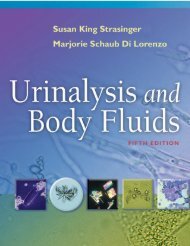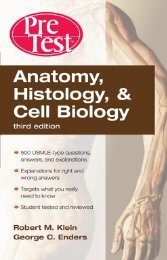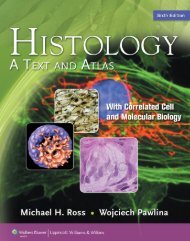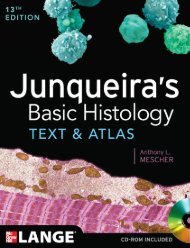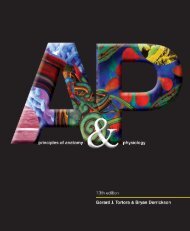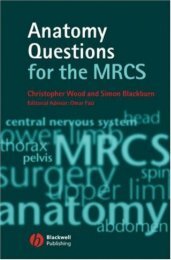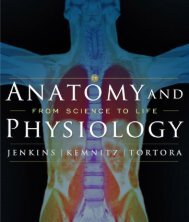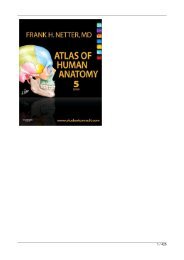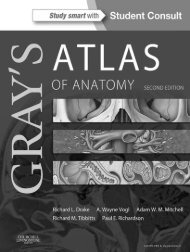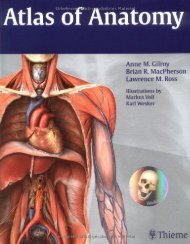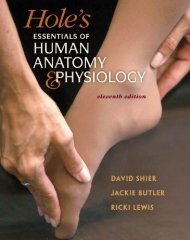theanatomyandphysiologylearningsystem4epdfdr-150930024720-lva1-app6891
Create successful ePaper yourself
Turn your PDF publications into a flip-book with our unique Google optimized e-Paper software.
Introduction to the<br />
Human Body<br />
1<br />
CHAPTer OBJeCTIVes<br />
Anatomy and Physiology<br />
• Define the terms anatomy and physiology<br />
and discuss the relationship between these two<br />
areas of study.<br />
Levels of Organization<br />
• List the six levels of organization within the<br />
human body.<br />
Organ Systems in the Body<br />
• Name the 11 organ systems of the body and<br />
briefly describe the major role of each system.<br />
Life Processes<br />
• List and define 10 life processes in the human<br />
body.<br />
Environmental Requirements for Life<br />
• List five physical environmental factors necessary<br />
for survival of the individual.<br />
Homeostasis<br />
• Discuss the concept of homeostasis.<br />
• Distinguish between negative feedback<br />
mechanisms and positive feedback<br />
mechanisms.<br />
Anatomical Terms<br />
• Describe the four criteria that are used to<br />
describe the anatomical position.<br />
• Use anatomical terms to describe body planes,<br />
body regions, and relative positions.<br />
• Distinguish between the dorsal body cavity and<br />
the ventral body cavity, and list the subdivisions<br />
of each cavity.<br />
Key Terms<br />
Anabolism (ah-NAB-oh-lizm) Building up, or<br />
synthesis of, reactions that require energy and<br />
make complex molecules out of two or more<br />
smaller ones<br />
Anatomical position (an-ah-TOM-ih-kul poh-ZIHshun)<br />
Standard reference position for the body<br />
Anatomy (ah-NAT-o-mee) Study of body structure<br />
and the relationships of its parts<br />
Catabolism (kah-TAB-oh-lizm) Reactions that<br />
break down complex molecules into two or more<br />
smaller ones with the release of energy<br />
Differentiation (dif-er-en-she-AY-shun) Process by<br />
which cells become structurally and functionally<br />
specialized<br />
Homeostasis (hoh-mee-oh-STAY-sis) Normal<br />
stable condition in which the body’s internal<br />
environment remains the same; constant internal<br />
environment<br />
Metabolism (meh-TAB-oh-lizm) Total of all<br />
biochemical reactions that take place in the body;<br />
includes anabolism and catabolism<br />
Negative feedback (NEG-ah-tiv FEED-bak)<br />
Mechanism of response in which a stimulus<br />
initiates reactions that reduce the stimulus<br />
Physiology (fiz-ee-AHL-oh-jee) Study of the<br />
functions of living organisms and their parts<br />
Positive feedback (POS-ih-tiv FEED-back)<br />
Mechanism of response in which a stimulus<br />
initiates reactions that increase the stimulus and<br />
the reaction keeps building until a culminating<br />
event occurs that halts the process<br />
1




